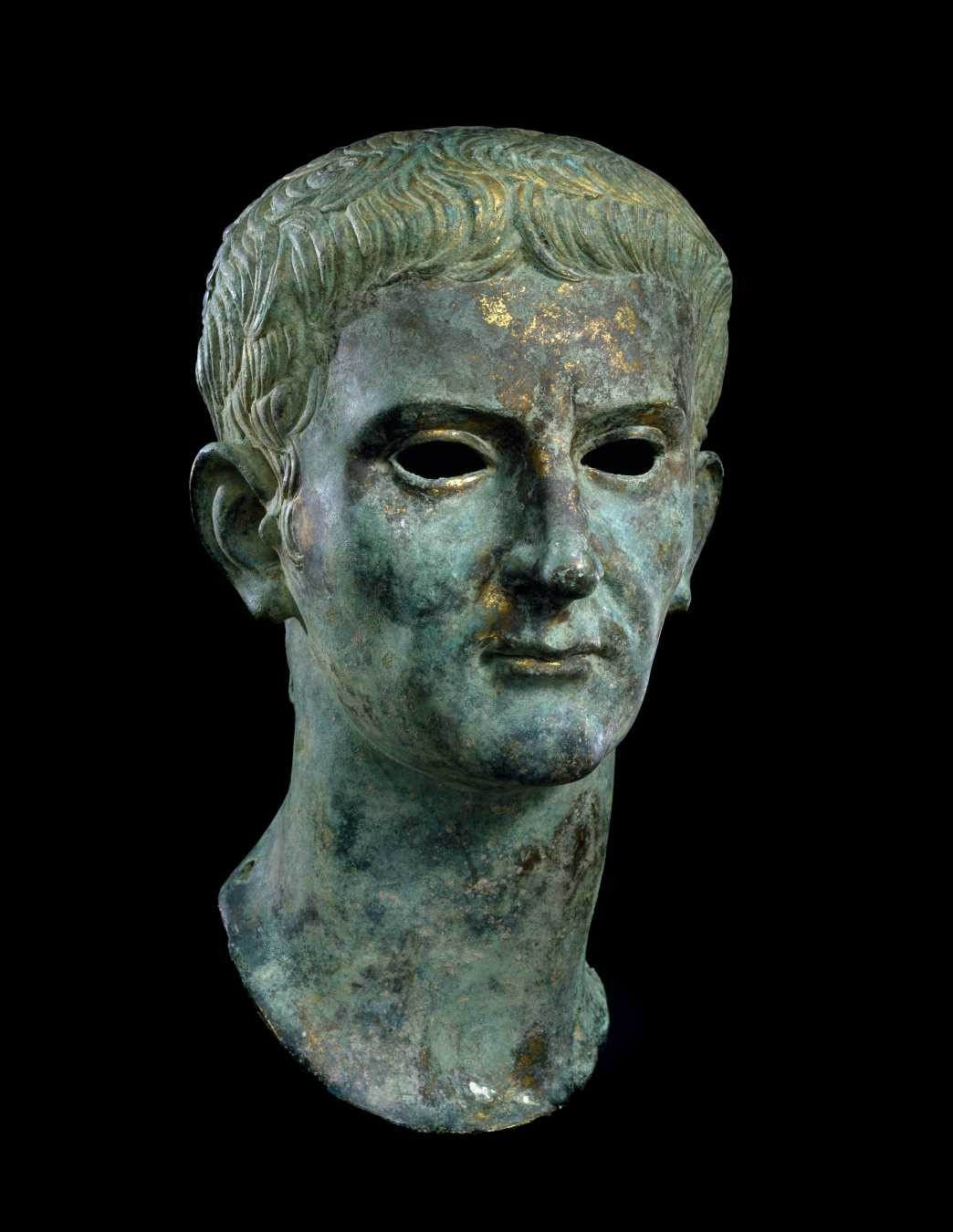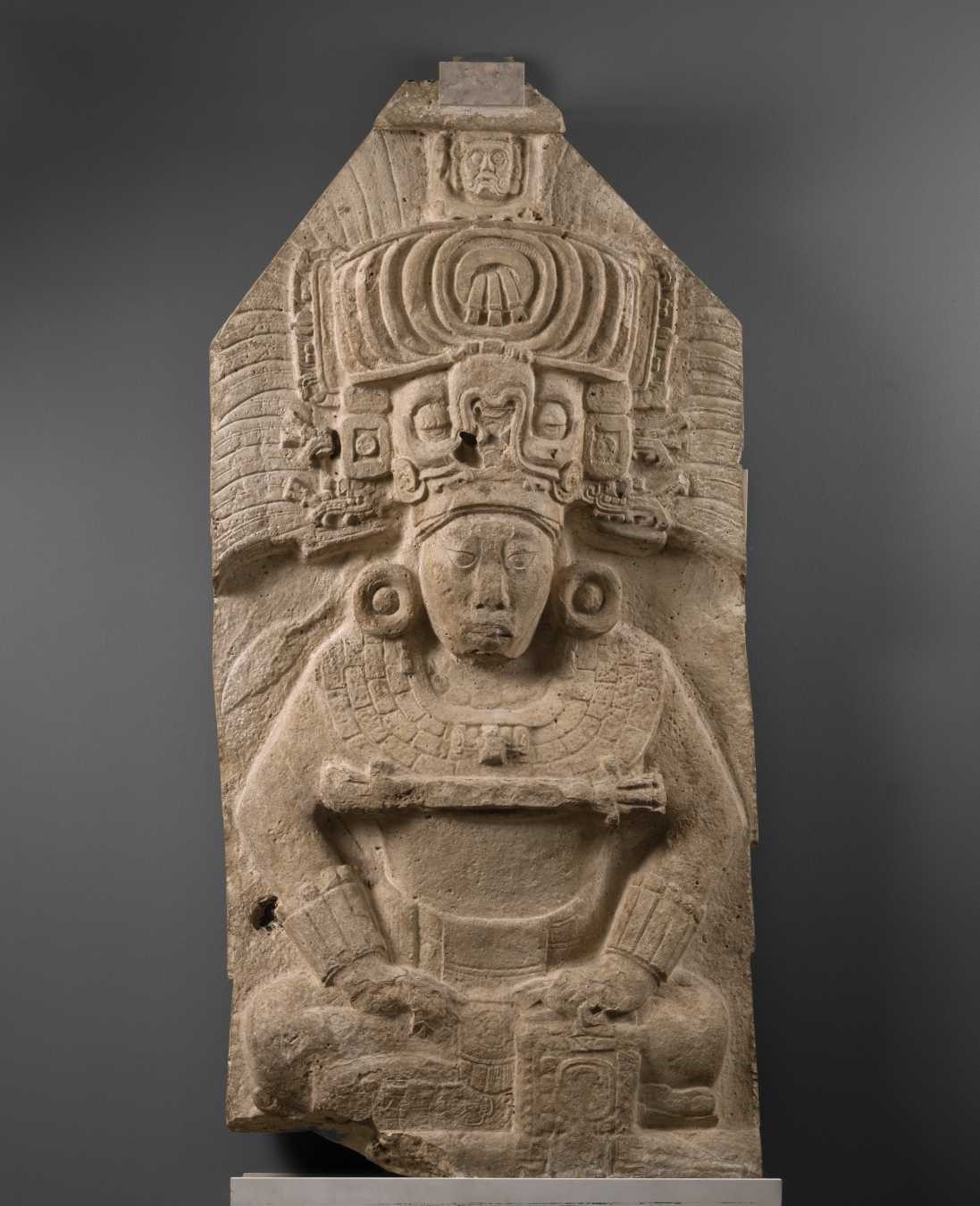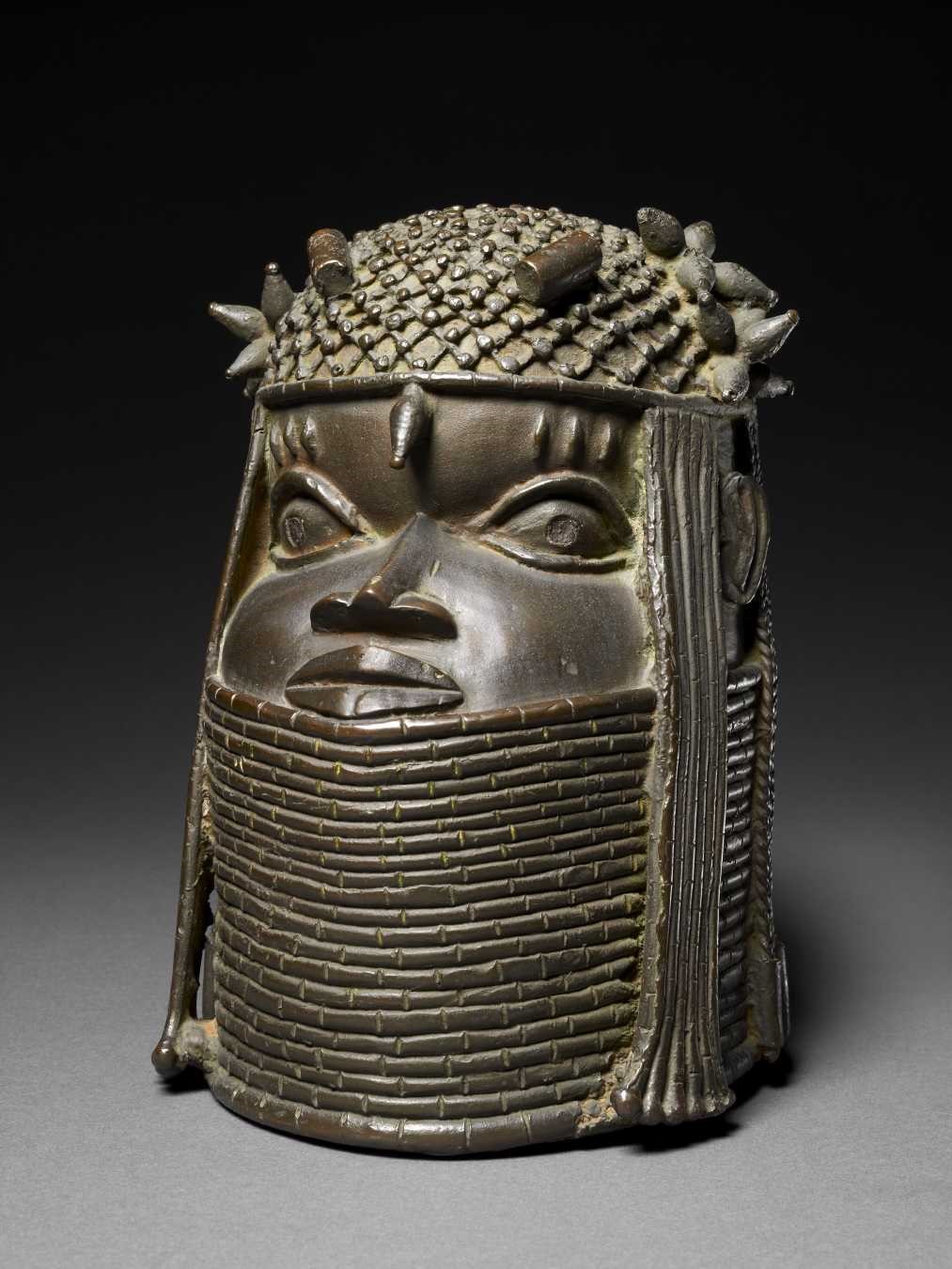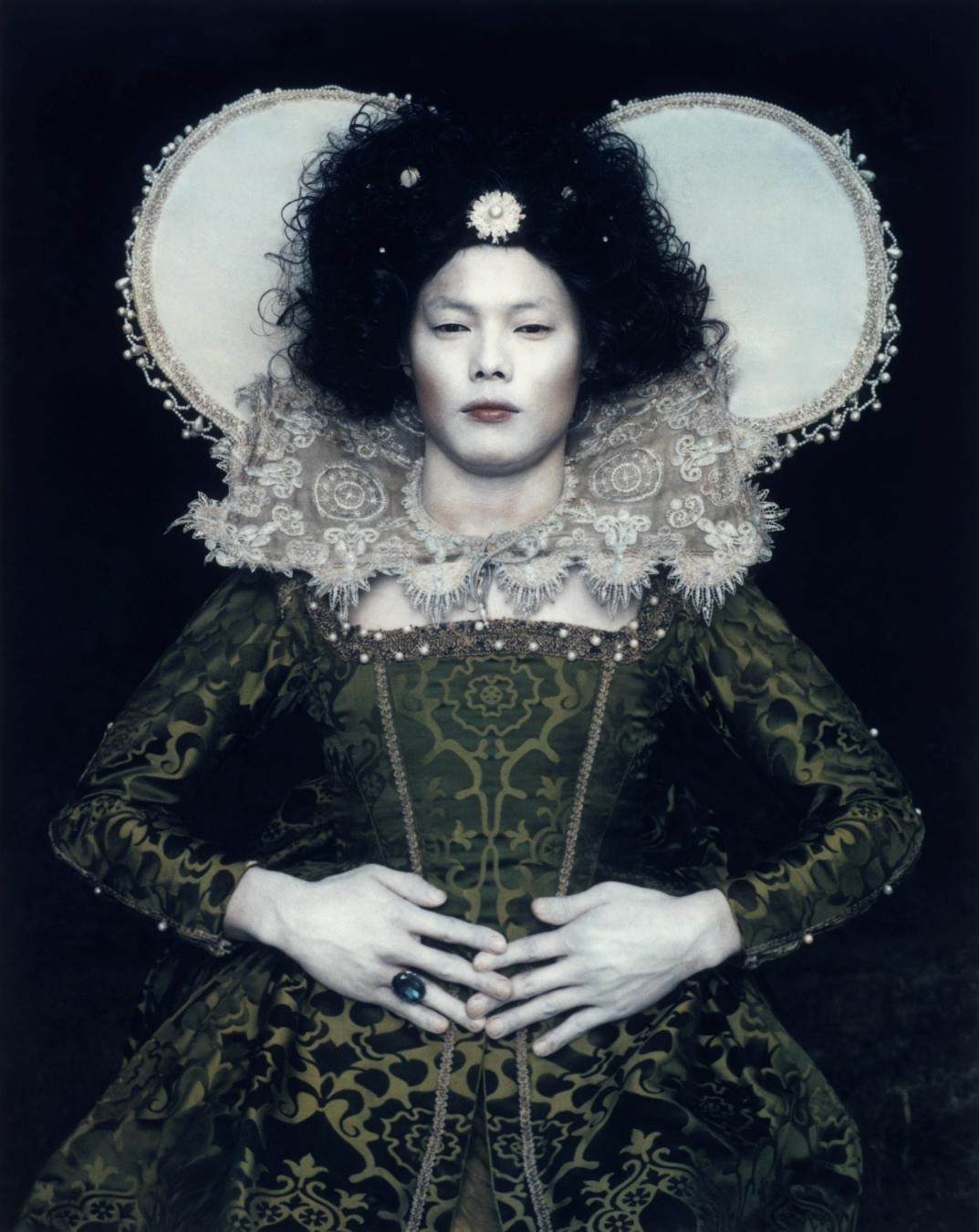Royal Reflections: Rulers in Art from the MFAH Collections October 12, 2018
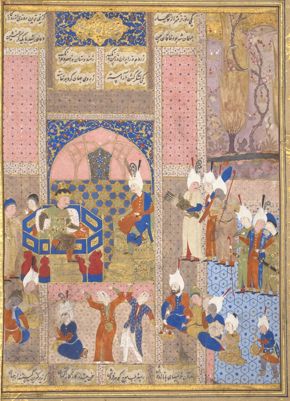
Nezami Ganjavi (author), Alexander Feasting with the Emperor of China, Page from a Dispersed Manuscript of Nezami’s “Khamsa (Quintet)” (detail), second quarter of the 16th century, ink, opaque watercolors, and gold, the Museum of Fine Arts, Houston, gift of Mrs. E. M. Soudavar.
Roman, Imperial Portrait of the Emperor Caligula, God and Ruler, 37–41 AD, gilt bronze, the Museum of Fine Arts, Houston, Museum purchase funded by the Alice Pratt Brown Museum Fund.
Edo culture, Court of Benin, Nigeria, Commemorative Head of a King, 16th–17th century, copper alloy, the MFAH, museum purchase with funds provided by the Alice Pratt Brown Museum Fund and gift of Oliver E. and Pamela F. Cobb.
Maya, Guatemala, Seated Ruler from Stela 11, 731 AD, limestone with traces of paint. Museum purchase.
Chan-Hyo Bae, Existing in Costume_1, 2006, chromogenic print, the Museum of Fine Arts, Houston, Museum purchase funded by the S.I. Morris Photography Endowment. © Chan-Hyo Bae
Tudors to Windsors: British Royal Portraits from Holbein to Warhol offers a centuries-spanning survey of monarchs through their portraits. Of course, rulers all over the world have always been portrayed in art, whether in sculpture, painting, printmaking, or photography.
The works below—drawn from the Museum’s collections—highlight the many ways to show power across the globe.
Roman, Imperial Portrait of the Emperor Caligula, God and Ruler, 37–41 AD
Although the identity of this magnificent gilt-bronze head remains open to scholarly debate, it is thought to be the Roman emperor Caligula, who proclaimed himself a god and erected golden statues of himself in Roman temples. After his brief, turbulent reign (AD 37–41), the senate condemned Caligula’s images and many were destroyed—meaning that few images today are known to be of Caligula.
Maya, Seated Ruler from Stela 11, 731 AD
Adorned with jewelry and a massive feathered headdress, this figure once gazed down on a scene of sacrifice. Archaeologists recently translated this ruler’s name to Itzam K’an Ahk, or Crocodile Precious Turtle. Animals were often incorporated into rulers’ names to convey symbolic meanings.
Edo peoples, Benin Kingdom, Commemorative Head of a King, 1500–1700
This life-size head of an oba, the name for spiritual and corporeal kings of Benin, reveals the metal-casting artistry of the West African kingdom in the 16th and 17th centuries. When a new king ascended, his coronation rites included casting of a pair of heads to honor his predecessor. This head, topped by a latticed cap with beads, displays three typical scarification marks above each eye and a high collar of oblong beads.
Nezami Ganjavi, Alexander Feasting with the Emperor of China (detail), second quarter of the 16th century
This page from a 16th-century copy of Khamsa (Five Poems) depicts Alexander the Great as a Persian ruler of the Safavid dynasty meeting with an enthroned Chinese emperor. Such stories were recounted and illustrated for centuries, both to celebrate rulers and to offer them guidance. Here, the encounter between two emperors also functions as a meeting between two cultures.
Chan-Hyo Bae, Existing in Costume_1, 2006
As a student in London, Korean photographer Chan-Hyo Bae (born 1975) experienced immense cultural confusion: “I continued to attempt to position myself with the Western culture, but every time I did so, I still felt like an alienated foreigner.” In his series Existing in Costume, Bae transforms himself into portraits of historic British women. As Elizabeth I in this photograph, his eyes meet the viewer’s, as if to say, “See me.”
See more images of monarchs, spanning five centuries, in “Tudors to Windsors: British Royal Portraits from Holbein to Warhol,” on view in the Law Building through January 27, 2019.

